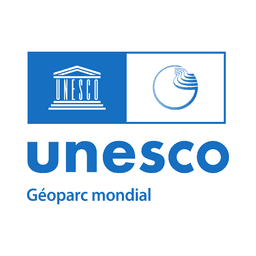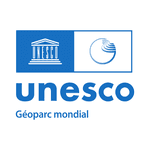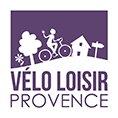The Ochres by bike
« Through small picturesque roads, this ride follows the western part of the route"The Ochres by bike". Accessible to all, it goes through the Mines of Bruoux in Gargas, through Roussillon, one of the most beautiful landscapes and villages of Luberon, then stops at the Conservatoire of Ochres. I love this land of many substances, textures and colours, where the light plays along with the changing seasons. Immerse yourself in the stunning beauty of these places! » Sylvie Palpant, Managing Director of Vélo Loisir Provence.
7 points of interest
 Geology
GeologyOchre
The ochre sands result from a deep chemical modification of green marine sands. About 100 million years ago, green sands emerged and were altered under a hot and humid climate which transformed into ochre sands. It is from these sands extracted in underground quarries or open-pit mines that ochre has been operated. Warning, sampling of ochre sands in the natural environment is prohibited!
 Patrimony and history
Patrimony and historyOchre processing
Through washing, then decanting in large basins, to drying, crushing and baking, a large scale of natural pigment was made, with a variety of colours. Developed in the late 18th century, the industrial process for making ochre pigment reaches its high point in the 1920s. Today, the Société des Ocres de France still operates a quarry in Gargas and produces 1200 tons of ochre per year.
 Fauna
FaunaNesting boxes for Athena
The Little Owl (also known as the Owl of Athena) is a cave-dwelling species needing to find holes in old trees and small rural buildings. During the renovation of the farm huts, it is necessary to either make as little noise as possible or to put a replacement nest box for the owl's reproduction.
 Panorama
PanoramaStones and ochre of the Calavon valley
This agricultural valley with cherry trees, vineyards and orchards, is opened onto many hilltop villages which are strong calling points in the landscape. The exceptional presence of ochre in the form of richly coloured cliffs and structures with multicoloured coatings are the special features of this territory.
 Panorama
PanoramaA viewpoint on the ochre
Make a detour through the landscaped viewpoint of Roussillon, a securing project carried out in 2015 by the Luberon RNP as part of the "Opération Grand Site" (Sustainable Tourism project). This way, you can enjoy the panoramas opening on ochreous cliffs and views of the village of Roussillon, proof of the ochre activity (coloured coated façades ...). Following the signage on site, you will be able to discover the origin of these colourful cliffs and ochre uses.
 Patrimony and history
Patrimony and historyOchre Conservatory
The Ochre Conservatory is established in the Mathieu factory. It is an old ochre factory which used to produce about 1000 tons of ochre per year between 1921 and 1963. The washing systems, the town oven and the mills have been restored in order to understand the different stages of ore processing, from extraction to shipping. Through visiting the site and the workshops, discover one of the finest jewels of the industrial ochre heritage, turned into a training centre on ochre and colour!
 Produits du terroir
Produits du terroirCherry in the Luberon
With the Gard department, the Vaucluse department is the largest producer of table cherries. The "Burlat" and the "Bigarreau" (also known as the Royal Ann cherry) are the most cultivated varieties in the Luberon. You can consume while fresh in summer or enjoy the main speciality of Apt:: candied cherry. Apt produces more than 10000 tons of candied fruits annually.! Many fruits have been preserved there since the 14th century, a real know-how.! Today, Apt remains the world capital of candied fruit.
Description
Across of the pharmacy, go right to reach below the small roundabout and turn left towards Lombards. Calmly climb to reach a crossing. At the stop sign, turn right and follow the route"The Ochres by bike". Reach the Mines of Bruoux. Then continue to the hamlet of Lombards. Exit through the right and get to the crossroads.
1 - Take a sharp right and at the corner of the campsite, turn left. Come out on the D227 and take a left for 2km. At the crossing with the D4, continue across on the D227 towards Roussillon. Climb two hairpin bends, take two lefts and enter the village streets. Go around a blockand reach to the left foot the ramp leading to the ochre trail.
2 – Go forward to La Burlière avenue (D105), pass a speed bump and at the next junction, go left. Reach a roundabout and continue left towards Apt. Reach another speed bump and at the Y junction, continue straight on the D104 towards Apt. Get to the Conservatoire of Ochres.
3 – Follow the D104, glide through the curves and at the straight line, look out for the small road to the left. Follow it and reach the D4. Cross with the utmost caution and take the small road across, leading to Lombards. Enter a residential area and reach the crossroads you didn't pass on your way going (point 1).
1 – Turn right and return to Gargas by the same route as the one used to go.
- Departure : Car park near the pharmacy, central Gargas
- Arrival : Gargas
- Towns crossed : Gargas, Saint-Saturnin-lès-Apt, and Roussillon
Forecast
Altimetric profile
Recommandations
This route follows streets opened to public traffic; under all circumstances,so it is therefore essential to respect the highway code. Wearing a helmet is highly recommended, for children as well as adults.!
Information desks
Luberon UNESCO Global Geopark
60, place Jean Jaurès, 84400 Apt
House of the Luberon Regional Nature Park
60, place Jean Jaurès, 84400 Apt
In the heart the old town centre of Apt, the House of the Luberon Regional Nature Park welcomes you in a town house of the 18th century. The permanent exhibition of the geology museum has a rich collection of fossils evidencing the geological history of the Luberon.
On sale at the shop: books, maps, guidebooks, games, posters...
Open Monday to Friday from 8:30 am to 12:00 pm and from 1:30 pm to 6 pm (and on Saturday, depending on the program). Free admission.
OTI Pays d’Apt Luberon
788 avenue Victor Hugo, 84400 Apt
Du 1er avril au 30 septembre
Ouvert du lundi au samedi de 9h30 à 12h30 et de 14h à 18h.
Juillet et août : Ouvert dimanche et jours fériés de 9h30 à 12h30
Du 1er octobre au 31 mars
Ouvert du lundi au mardi et du jeudi au samedi de 9h30 à 12h30 et de 14h à 18h.
Fermé le mercredi, dimanche et jours fériés.
Access and parking
At 5 km northwest of Apt by the D900 and D101.
Parking :
Source


Report a problem or an error
If you have found an error on this page or if you have noticed any problems during your hike, please report them to us here:




